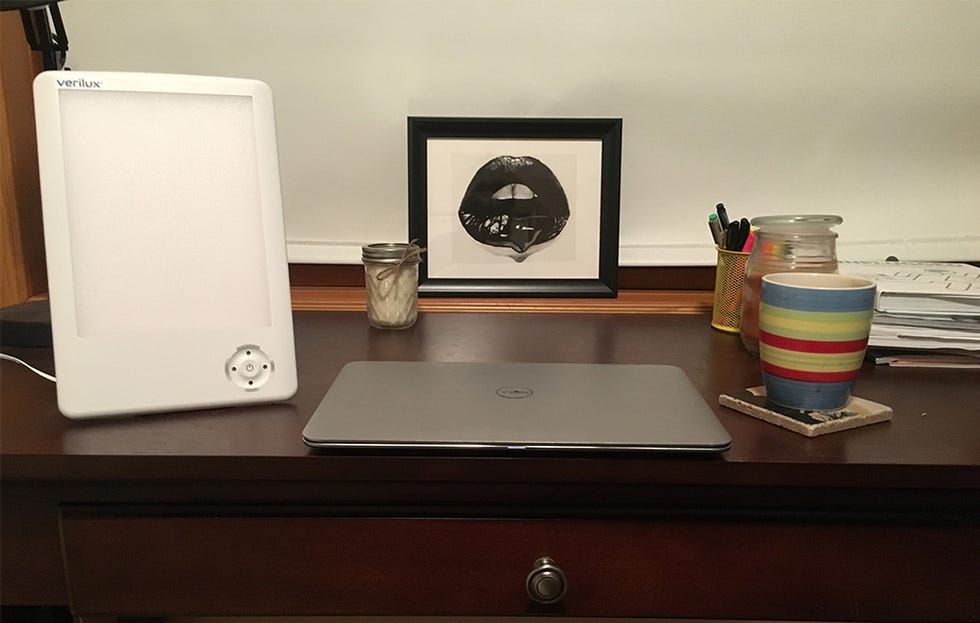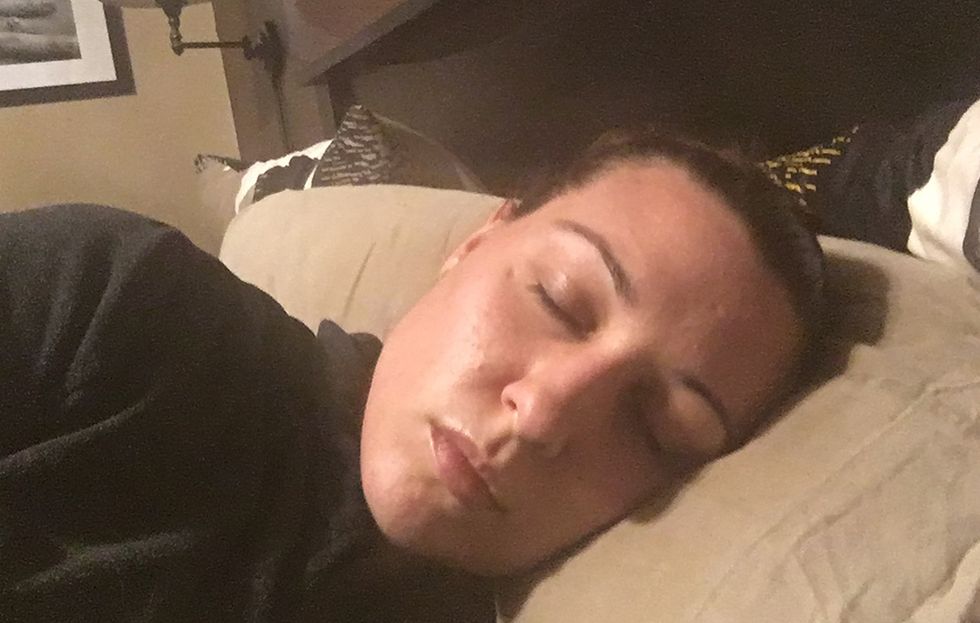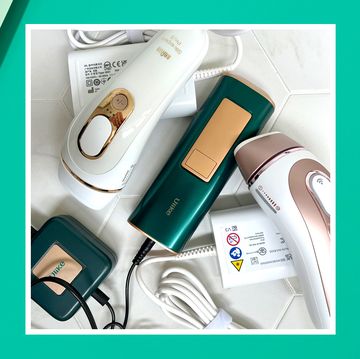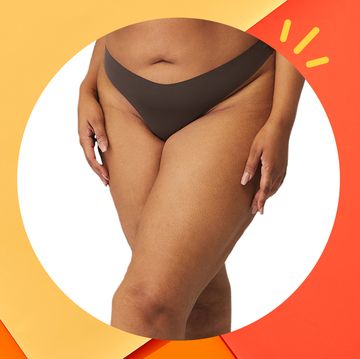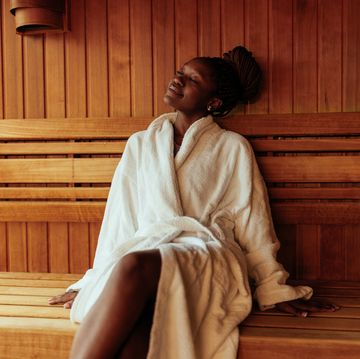A whopping 50 to 70 million U.S. adults have a sleep disorder, according to the American Sleep Association. I’m one of them.
When I was in sixth grade, I was diagnosed with delayed sleep phase syndrome (DSPS), a disorder that makes me unable to fall asleep at conventional bedtimes. Understandably, this makes it hard for me to wake up when I’m expected to, and leads to a lot of sleep-deprived days. Even if I do manage to fall asleep at a normal time, I’m typically drowsy until mid-afternoon. (Yeah, it’s about as fun as it sounds.)
So, when I had the chance to try light therapy for three weeks, I jumped.
Light therapy is used to treat a variety of sleep disorders, including mine. When undergoing light therapy, you sit near a device that mimics natural outdoor light (also known as blue light). This is known as a light therapy box, and experts believe that consistent use can have a positive effect on the chemicals in your brain related to mood and sleep.
It's also thought to help suppress the secretion of melatonin, the neurochemical known to mediate and facilitate sleep, first thing in the morning, says Scott Bea, Psy.D., clinical psychologist at Cleveland Clinic. “Consequently, individuals who benefit from light therapy notice less sleepiness and improved energy levels,” he says.
Find out how to turn off your brain so you can actually sleep at night:
As a bonus, experts also believe exposure to natural light may affect the secretion of serotonin, a neurochemical that helps regulate mood, Bea says. This effect makes light therapy a common solution for seasonal affective disorder (SAD), or "winter blues." I'm a Minnesota gal, used to dark, dreary winters, so the potential mood boost definitely sounded attractive to me.
Light therapy helps mimic our biological desire to start our days with morning sunlight and end them after the sun has set, says Phyllis Zee, M.D., Ph.D., director of the Sleep Disorders Center at Northwestern Memorial Hospital. Unfortunately, many of us spend our work days indoors with little but fluorescent bulbs and computer screens to light our way. “This has really changed our sleep-wake habits, as well as our ability to stay in sync with our internal light-dark cycle,” Zee says.
To see just how much of an impact daily exposure to natural sunlight can have on sleep, Zee and her colleagues conducted a small study on office workers. They found that those who had windows near their workstation had greater exposure to natural light throughout the day, resulting in more physical activity and better sleep quality than workers with limited access to natural light.
Related: 5 Signs Your Exhaustion Is A Symptom Of A Much Bigger Problem
My Experiment
For this experiment, I used the Verilux HappyLight Touch, and I have to say I was pleasantly surprised when I unwrapped it for the first time. It’s light (pun intended), compact, and a thousand times more attractive than the old-school behemoth I had tried—and failed to stay consistent with—back in middle school. You hardly even notice it's there; it was on my desk a solid week before my husband asked what it was. (The words "space-age" may have been mentioned.)
Every morning for three weeks, I rolled out of bed around 9 or 10 a.m., stumbled into my home office, and powered on my HappyLight. Because it sat right on the edge of my desk next to my computer, remembering to turn it on wasn't an issue most mornings.
Granted, there were a few high-stress days here and there where I just plain forgot to do light therapy. And once I realized I’d forgotten, it was too late. According to Zee, it’s critical to do light therapy within an hour of waking up. This is because the light therapy is helping to regulate your body’s 24-hour circadian rhythm, or sleep-wake cycle. Getting that light first thing when you wake up jump-starts this cycle so you’ll be ready to sleep at a more regular time.
Per instructions from Zee, I made sure to sit approximately 12 to 18 inches away from the light box. This is close enough, but not too close. If you sit too close to the light source, your pupil constricts, which doesn’t allow as much light in.
At first, the light was bright and obnoxious (hey, I'd just woken up!). After a few days, however, I got used to it. Some days, I even forgot it was there.
Most mornings I soaked in that light for at least 30 minutes, but I sometimes just left the light on for the entire morning (about three hours). Zee says light therapy works best if you do it for two to three hours, but 30 per 45 minutes still offers benefits.
Related: 'I Drank Lemon Water Every Day for 2 Weeks—Here’s What Happened'
My Results
For the first few days, I didn’t feel too different, which isn't surprising when you consider effects are expected within the first two weeks of consistent use. But after just one week, the perks started rolling in. For one thing, I notice that my energy levels were up significantly throughout the day. Ordinarily I feel drowsy from morning until mid-afternoon, when I finally start feeling awake. So I was ecstatic to feel alert and focused all morning and all afternoon.
I still had trouble falling asleep at conventional bedtimes, but I was falling asleep earlier than usual (think: 12 or 1 a.m. as opposed to 3 or 4 a.m.), which made a huge difference in the quality and quantity of rest I was getting. And once the clock struck 10 a.m., I was up and ready to go. This was a far cry from just one week earlier when I had to regularly dish out self-talk just to make it to the coffee pot.
(Get the latest health, weight loss, fitness, and sex intel delivered straight to your inbox. Sign up for our "Daily Dose" newsletter.)
Thanks to this energy boost, I was able to get right to work without much effort. What's more, I found that I was able to work for longer periods of time before needing to refill my coffee mug. My productivity soared, and my mood right along with it.
Basically, I’m hooked.

